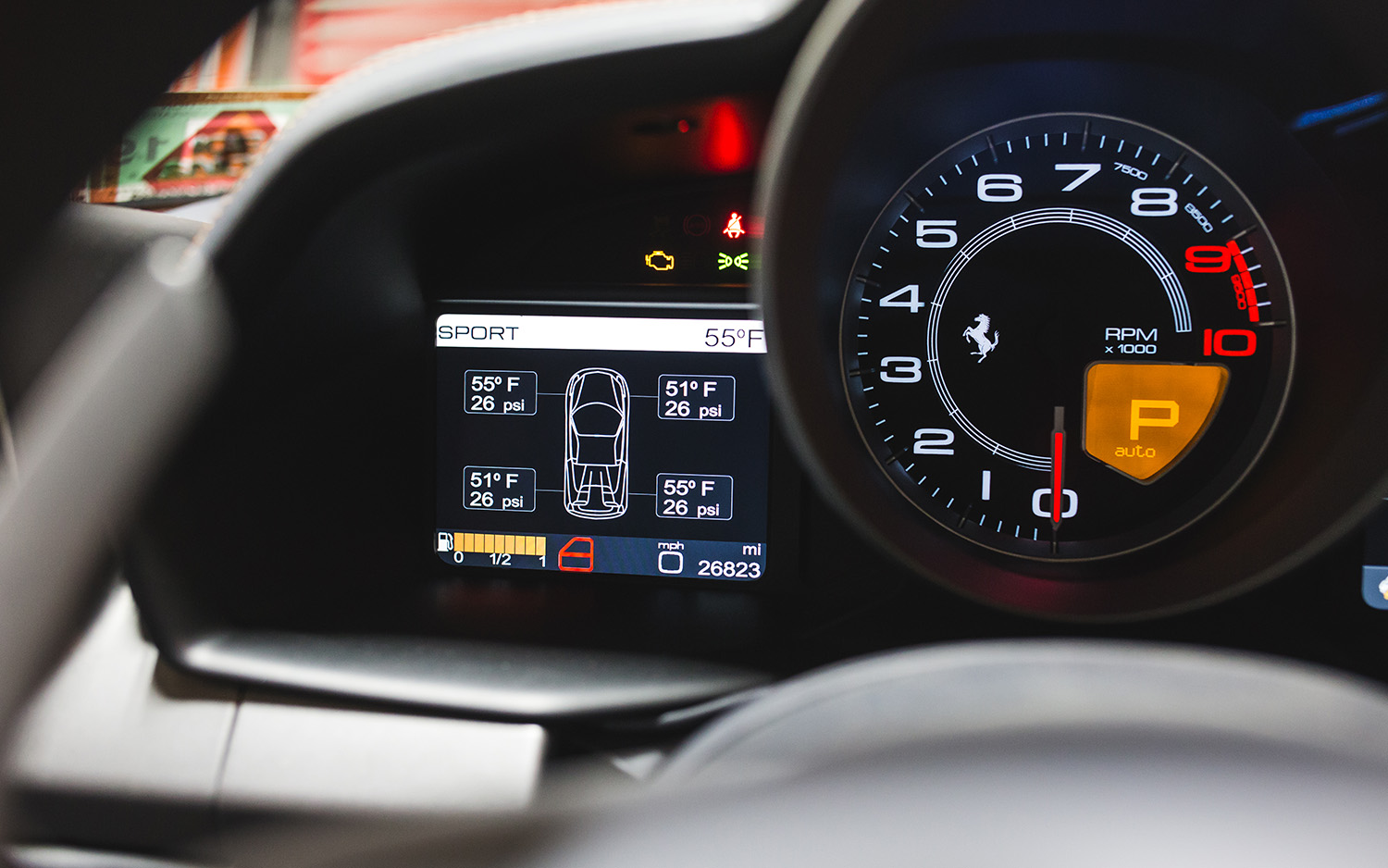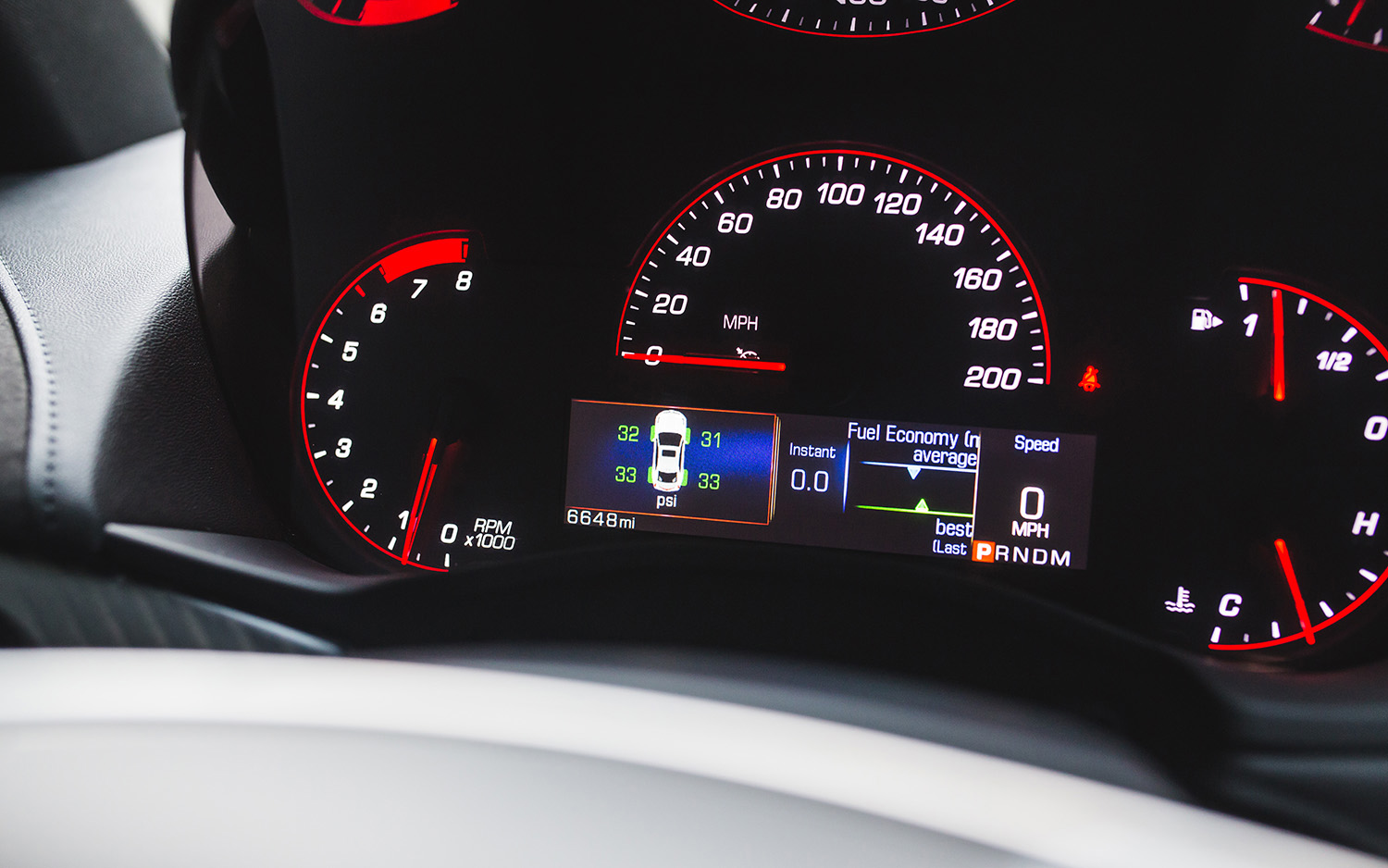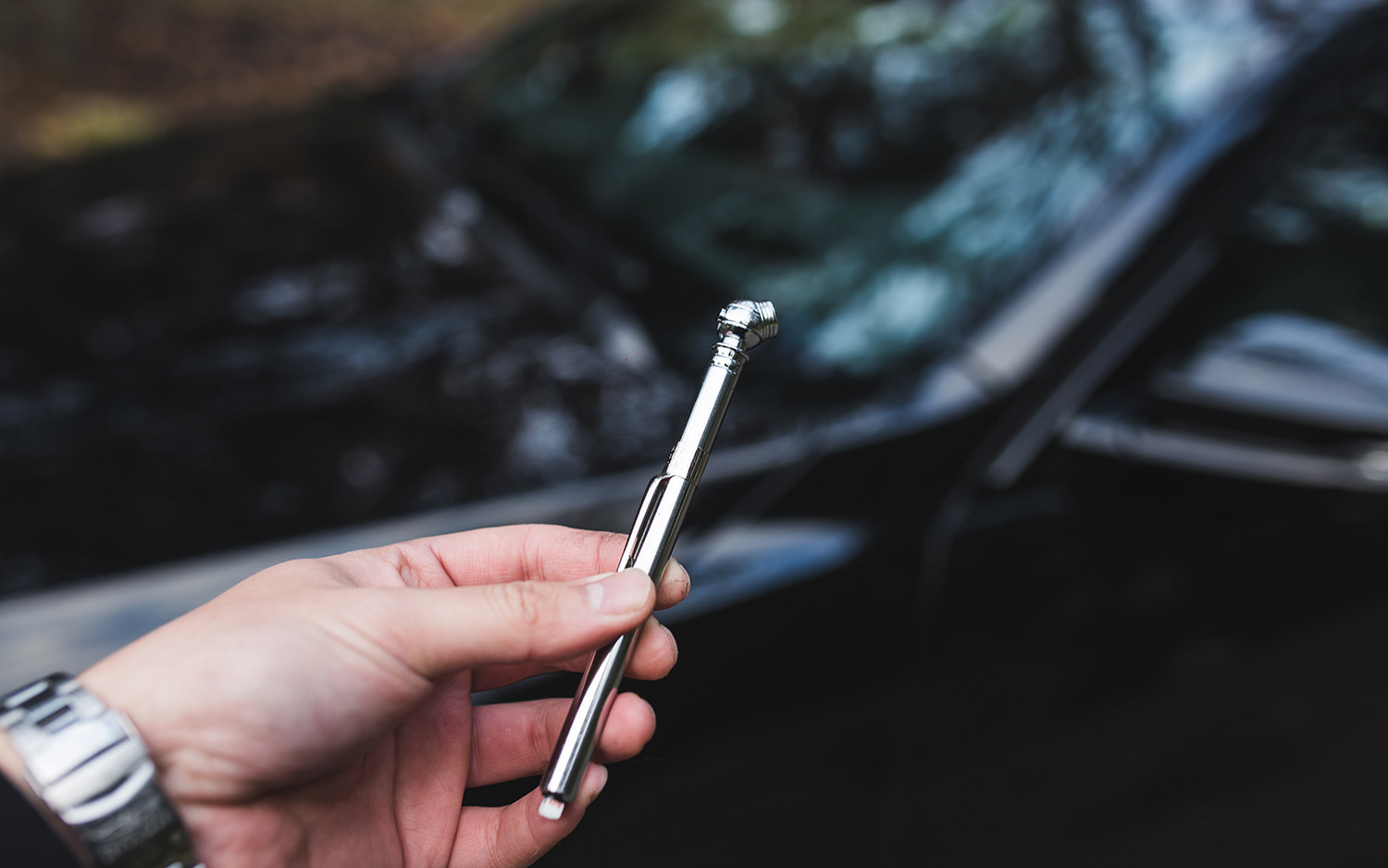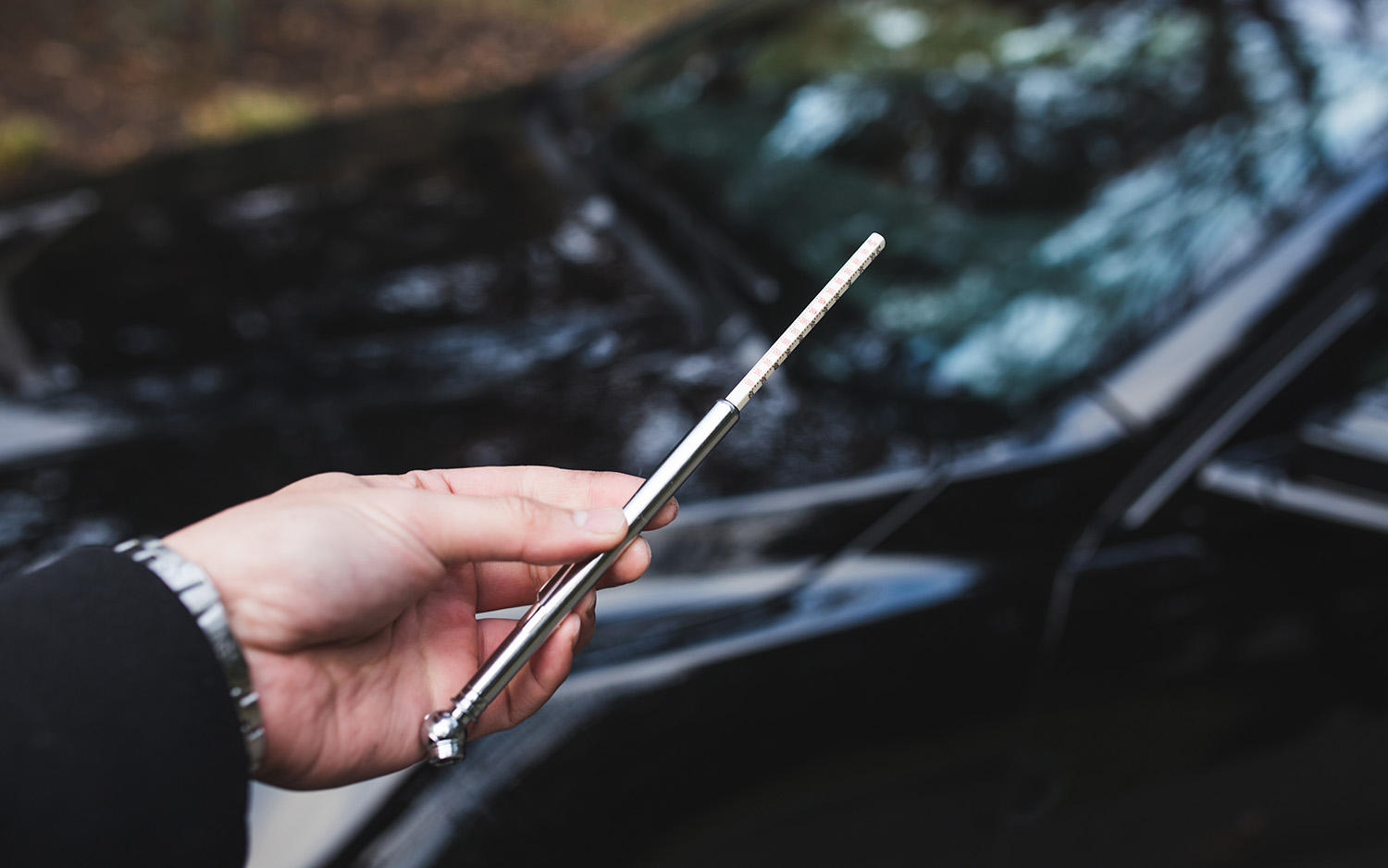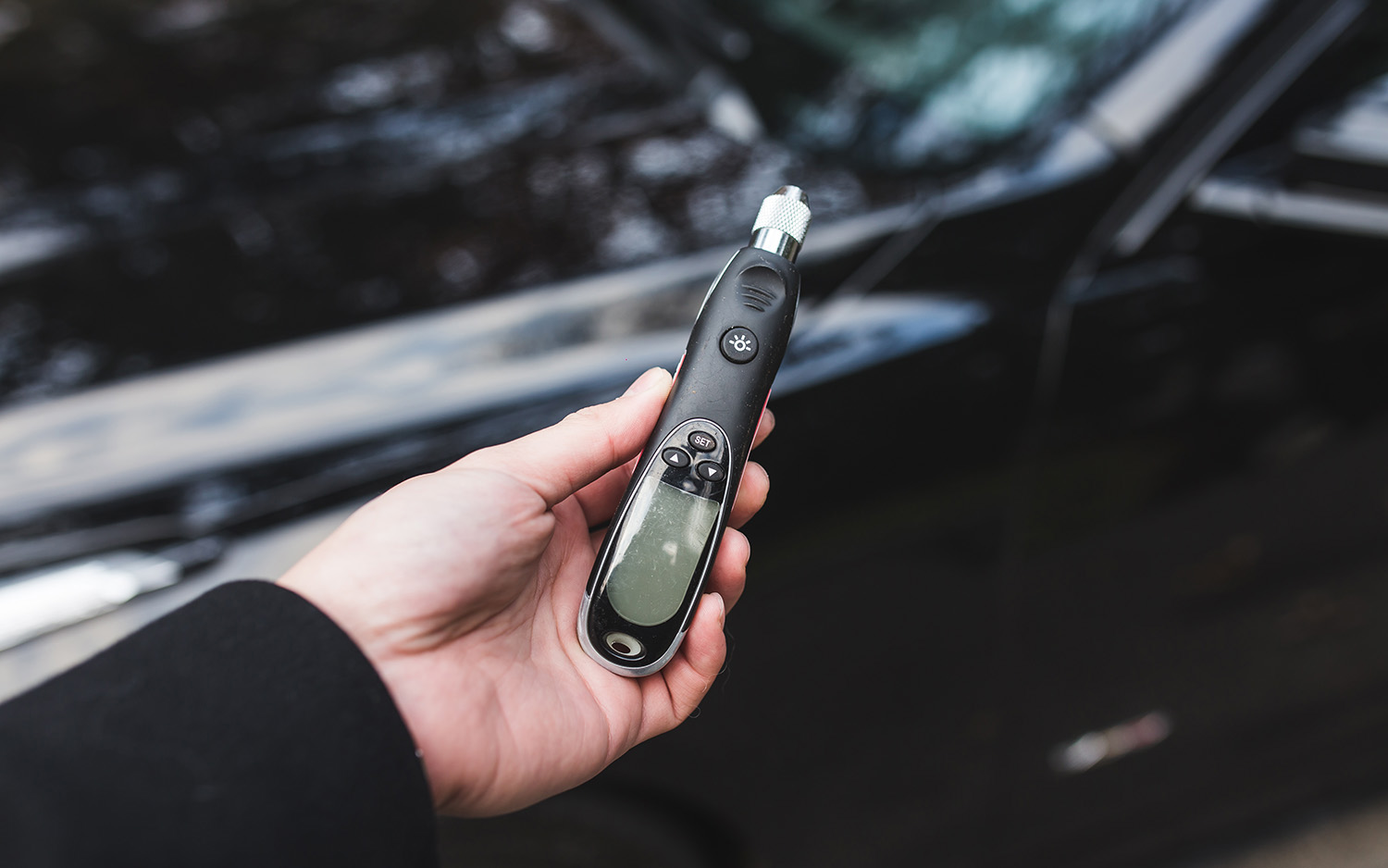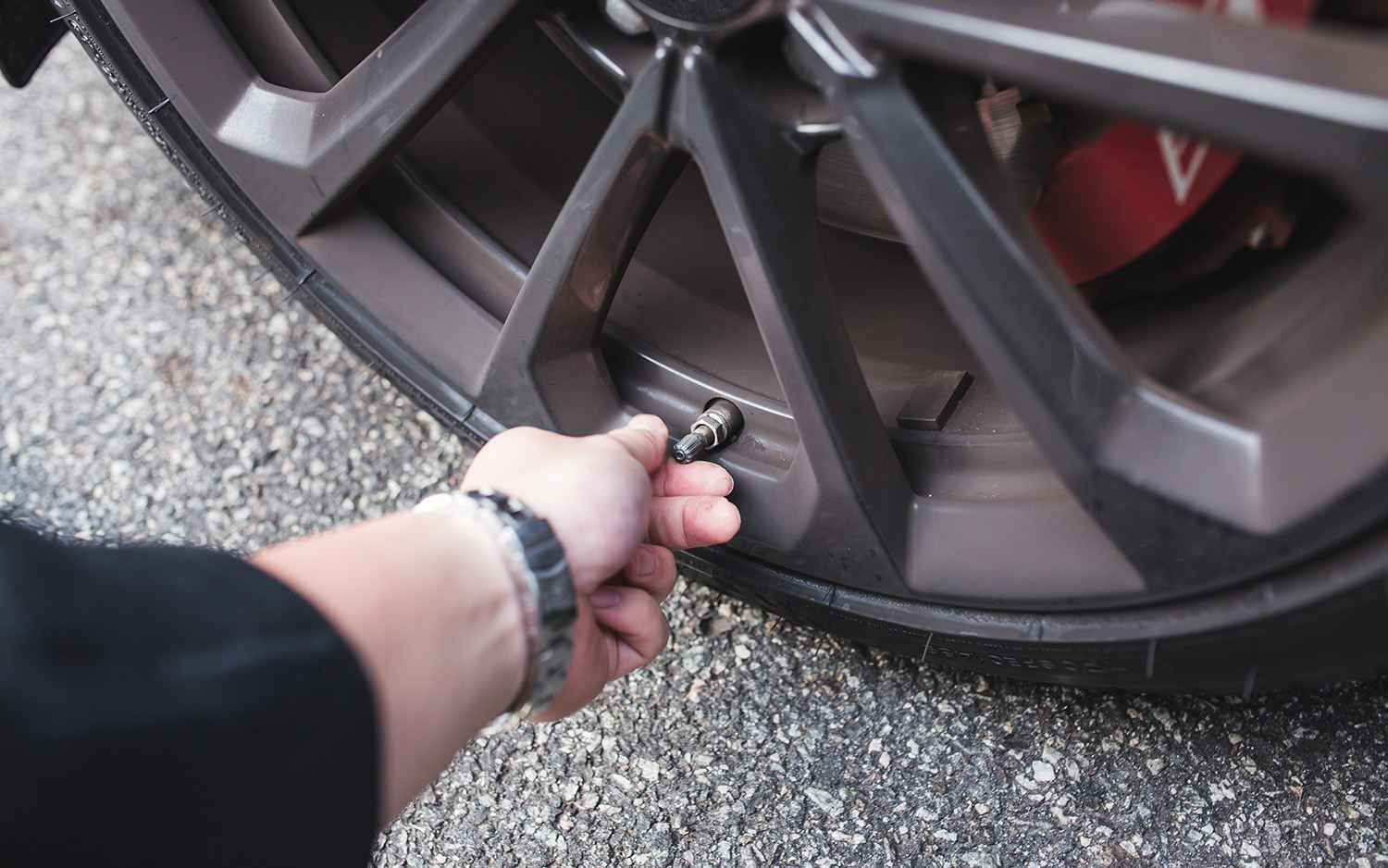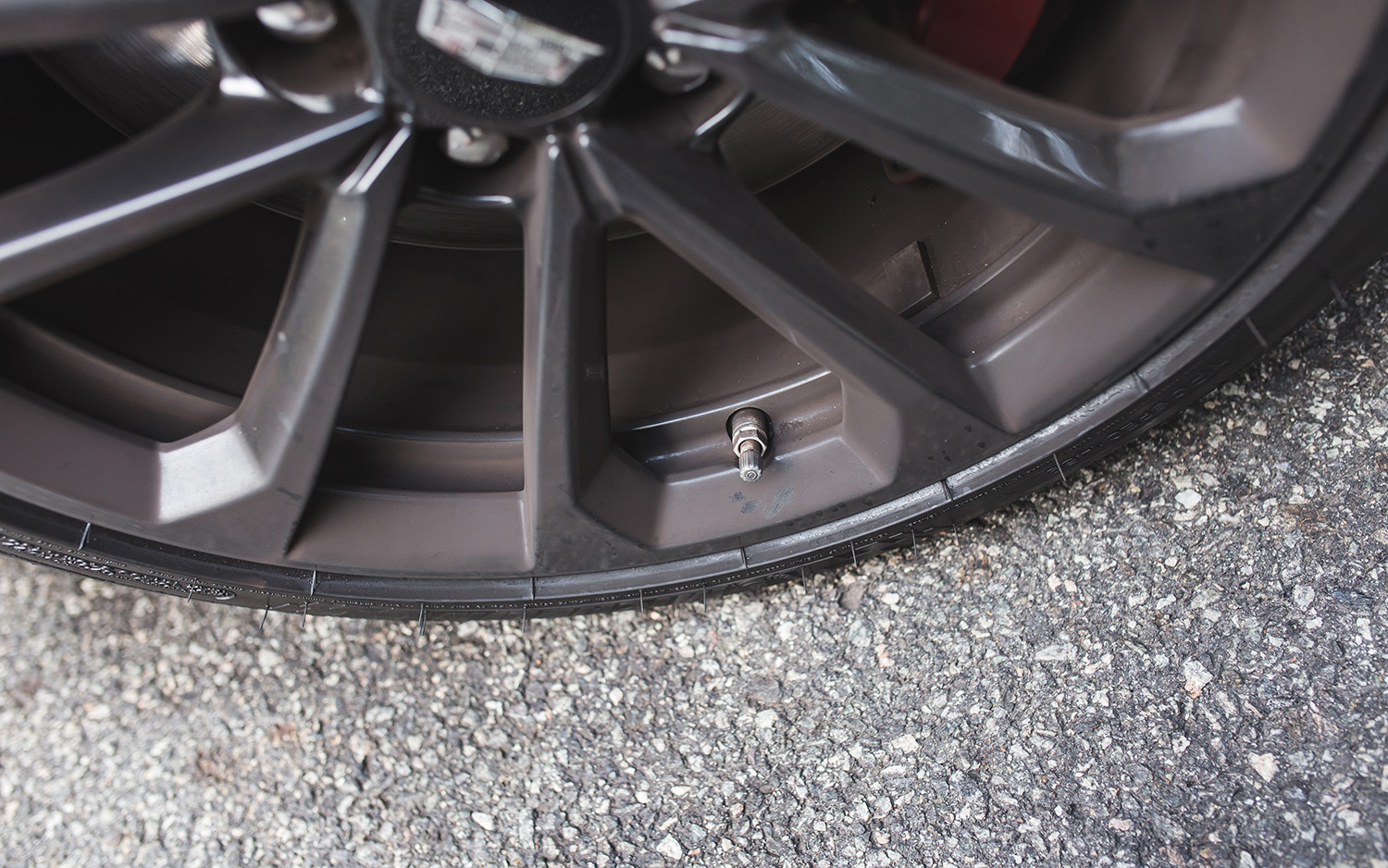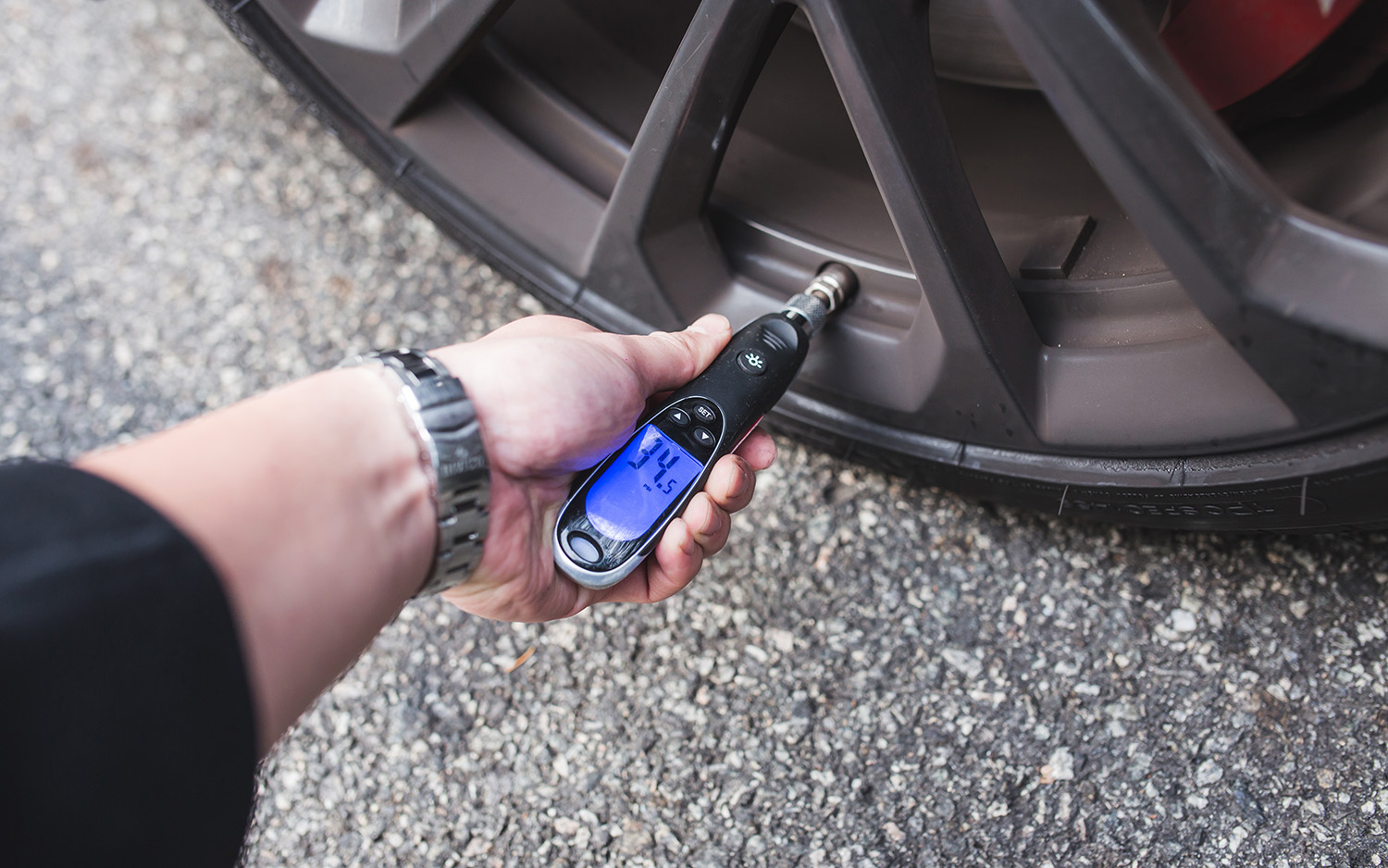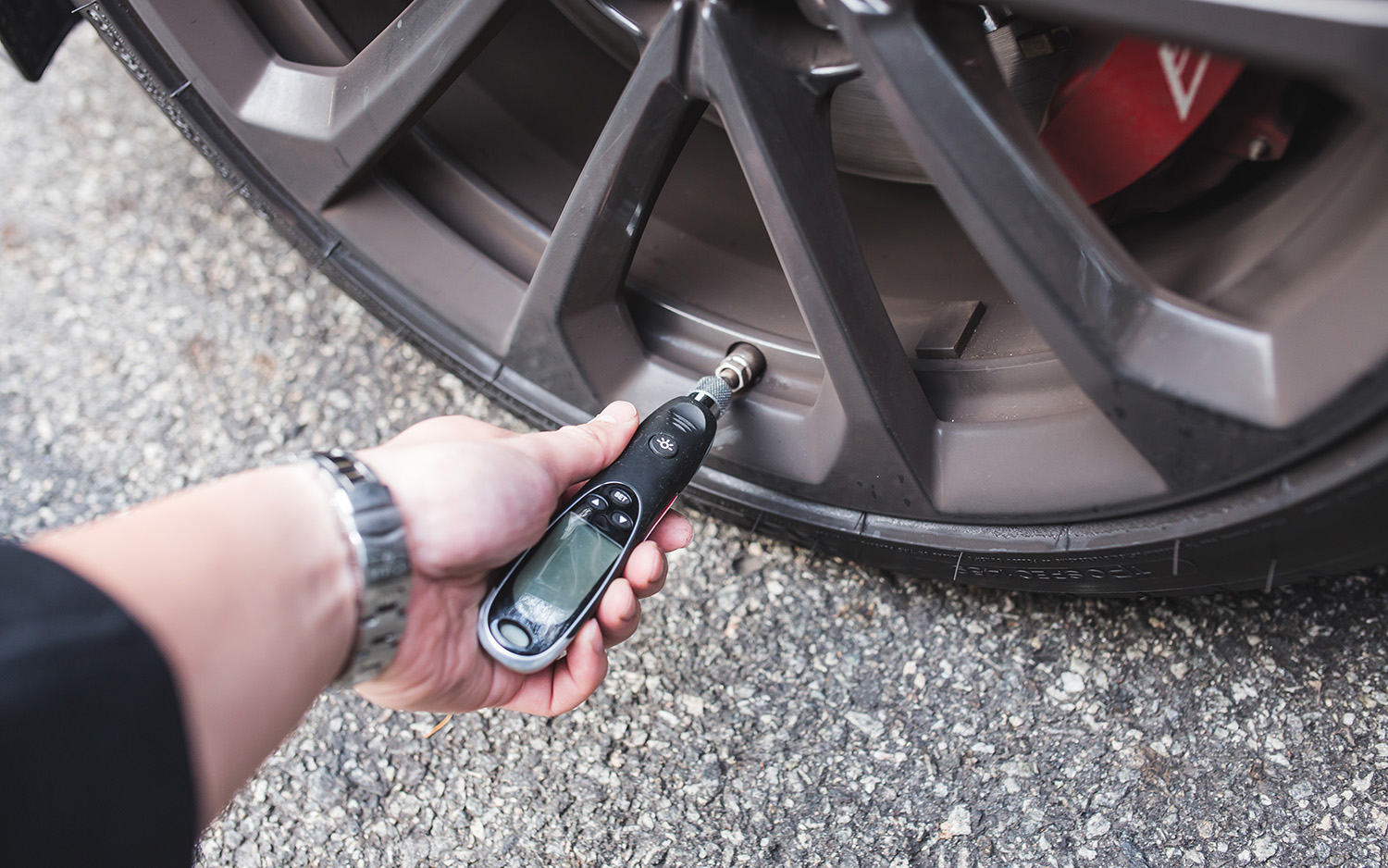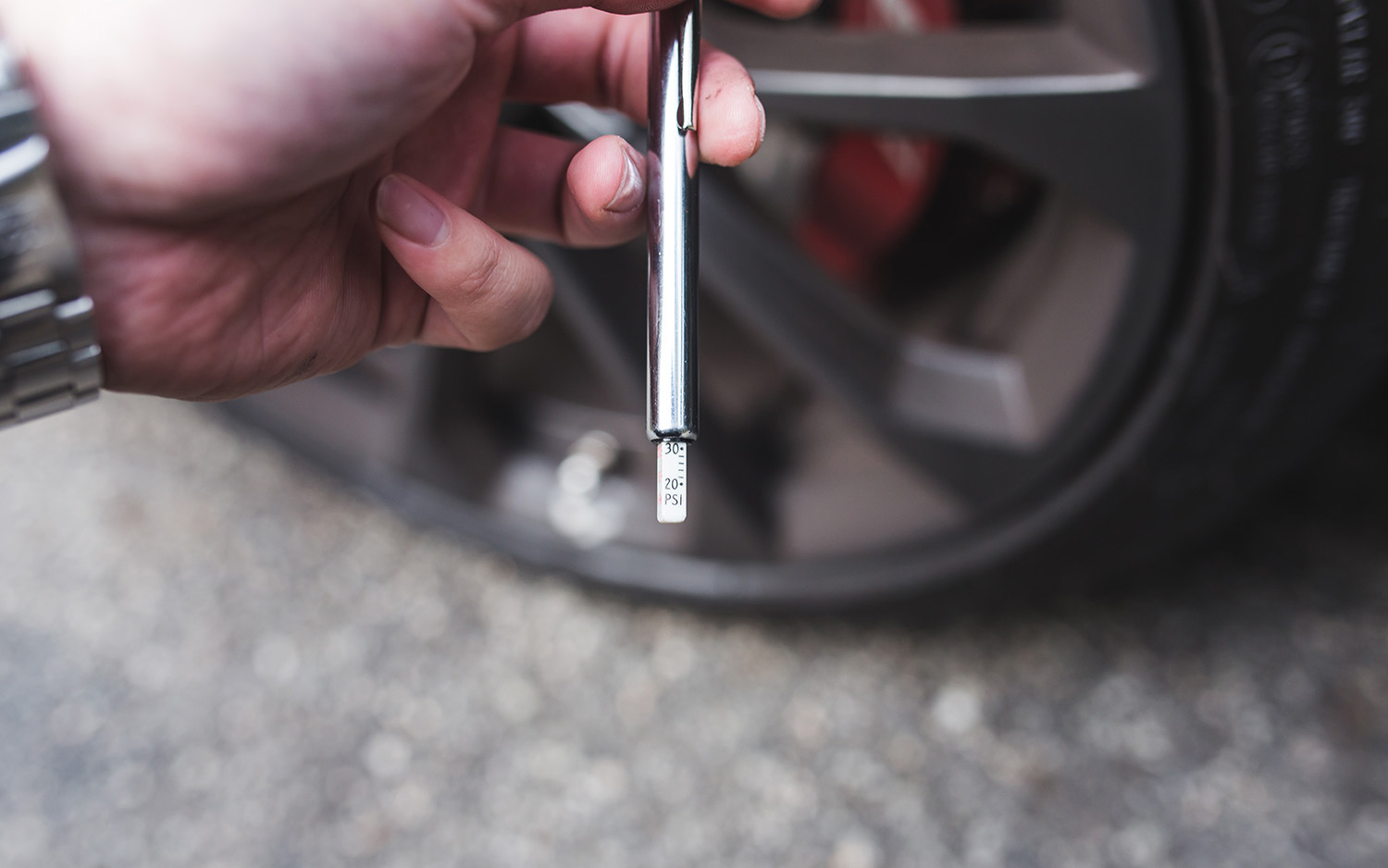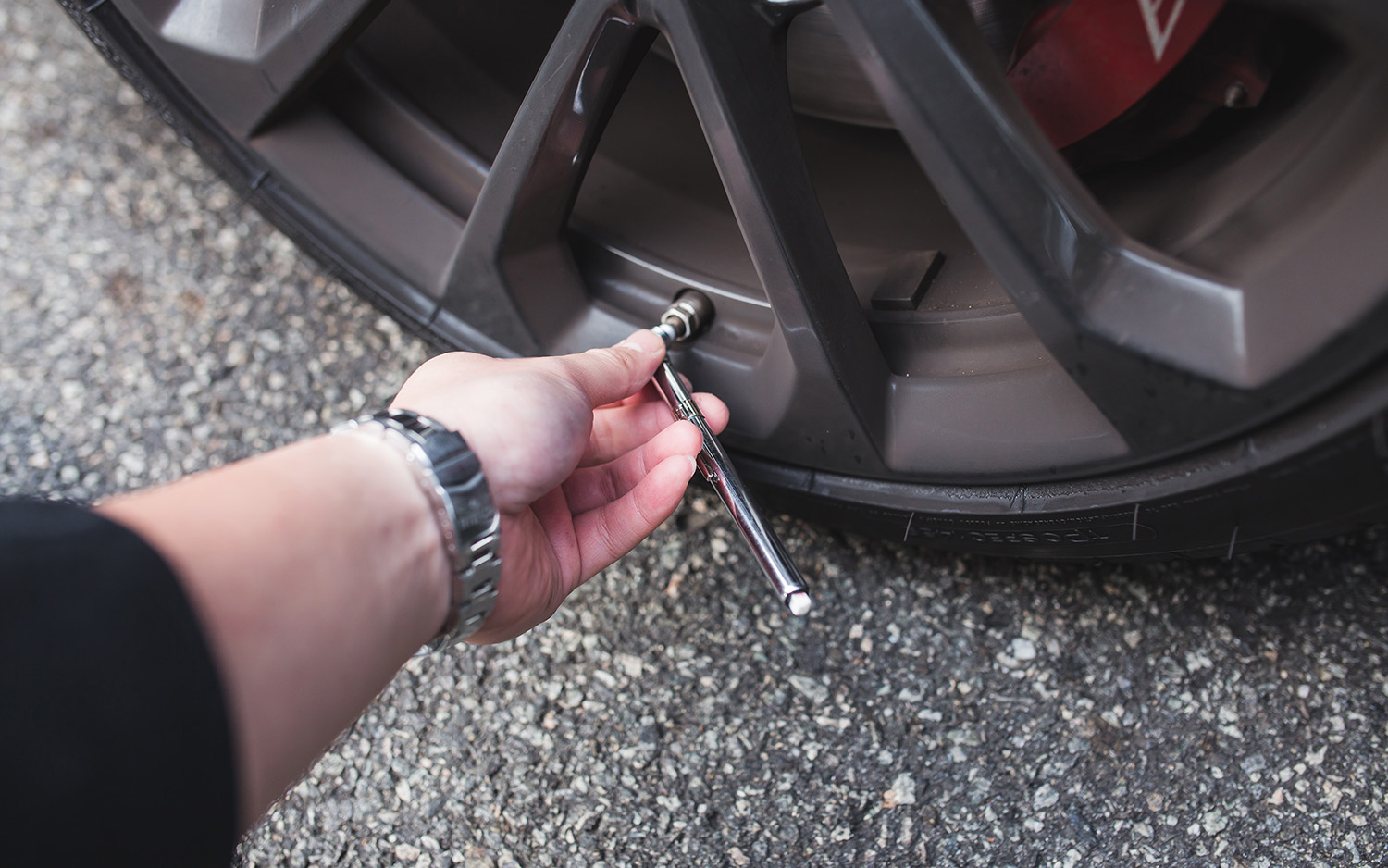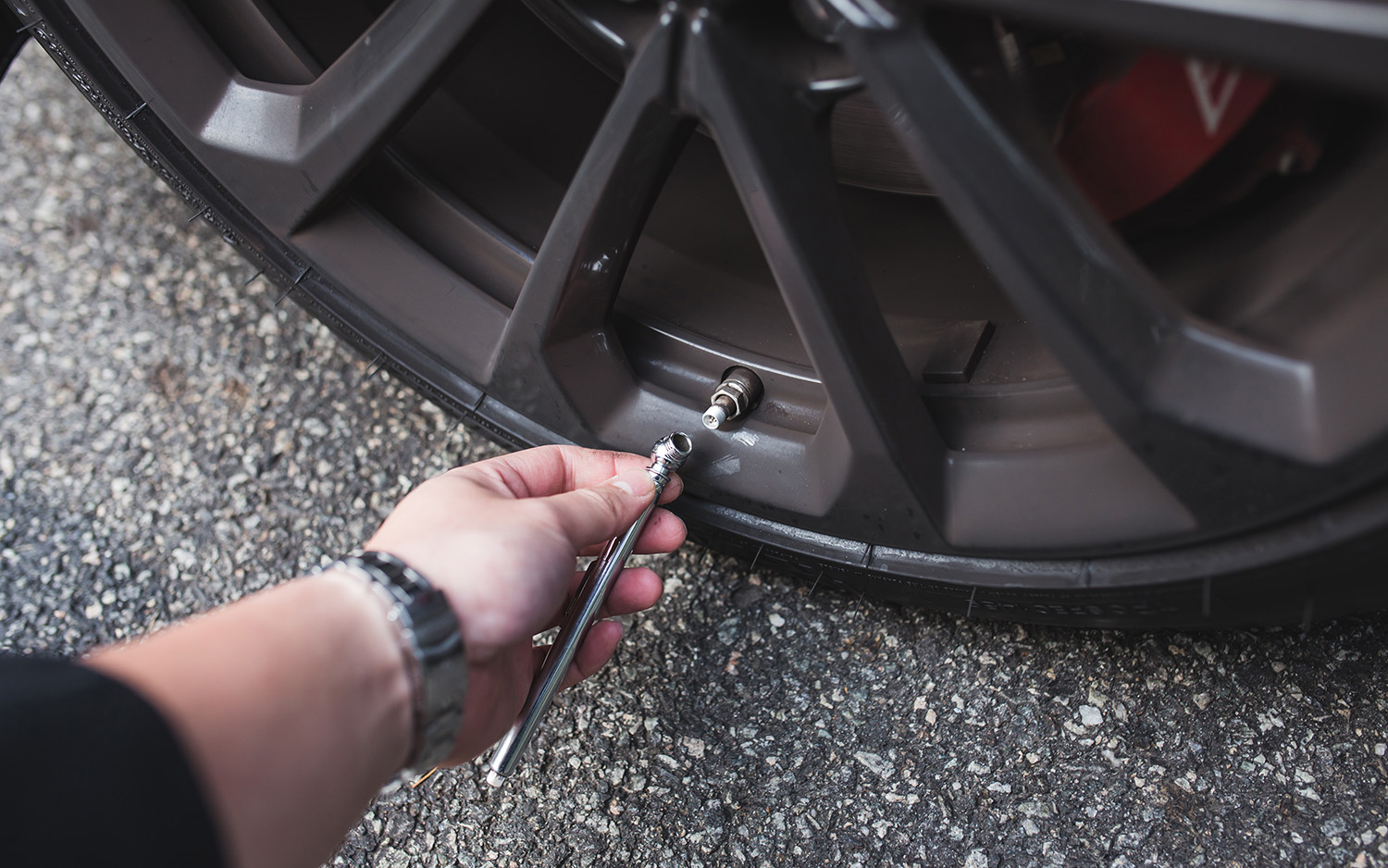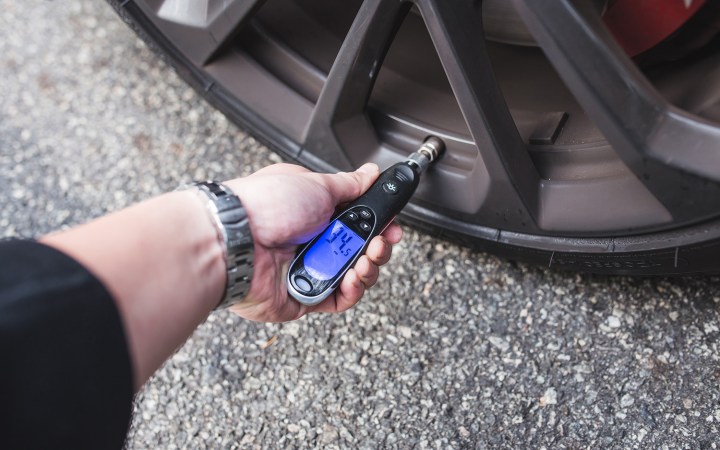
Other maintenance guides
- How to change your spark plugs
- How to change a car battery
- How to rotate your tires
- How to jump-start a car
Checking your tire pressure might seem like a simple task, similar to the job of making sure there’s gas in the tank. However, believe it or not, checking tire pressure is something that often goes overlooked as people get caught up in their daily grind.
As seasonal changes yield different outdoor temperatures, your tires can perform very differently. For instance, the air pressurized in your tire can expand or contract according to use and ambient temperature, altering the contact patch, the behavior of your tire, and thus the way your vehicle performs. For the sake of motoring safety, it’s crucial to often check your tire pressure to make sure it’s correct before you drive. If you’ve never checked your tire pressure before, no worries — we’ve created a simple guide that’ll show you how.
Ways to check tire pressure
There are various ways to check the tire pressure on your vehicle. If you have a car that was made around or just after 1986, there’s a chance it comes with a tire pressure monitoring system (TPMS). Those chances increase as the cars get newer. For instance, the U.S. saw its first TPMS-equipped car in 1991, thanks to General Motors equipping the Chevrolet Corvette with the system. If your car was made after September 2007, your car unquestionably has TPMS, a federal safety mandate for light-duty vehicles (weighing less than 10,000 pounds), imposed through the United States TREAD Act of 2000. It’s a policy enacted following the historic and major Firestone tire recall of the late 1990s that affected Ford Explorer trucks equipped with faulty tires from the factory.
What does TPMS do? It automatically notifies you via a lit dashboard icon if you either have too much or too little air in your tires. Some of the systems are particularly rudimentary, with a single warning light suggesting one or more of the four tires isn’t filled properly. With more recent cars equipped with infotainment systems or trip computers embedded into the gauge cluster, there are more comprehensive TPM systems that tell you the approximate pressure of each tire.
Here are a few examples of TPM systems on newer vehicles:
If your ride doesn’t have a TPM system, or it does but it doesn’t display individual tire pressures, you’ll need to check the tires the old-fashioned way. First, you need to acquire a tire pressure gauge. These can be picked up very easily from places like your local gas station quick-mart, or any local automotive parts or general hardware department store. Most are just a few dollars, but the fancier ones can cost as much as $20 or $30.
These are the two most common types of tire pressure gauges, analog versus digital:
Step 1: Determine your correct tire pressure
Your owner’s manual will tell you the proper tire pressure readings for your vehicle application and associated weight. On most cars, like this 2017 Cadillac ATS-V Coupe, the tire pressure information is printed on a sticker placed on the inner door as well.

Step 2: Double-check the tire sidewall
Read the tire sidewall and compare the information provided to the figures you got from your owner’s manual. As long as your tires are stock or within stock requirements (custom wheel arrangements notwithstanding), this is where your car’s tire pressure should be.
Step 3: Remove the tire valve stem cover
Access any one of your four tires and remove the tire valve stem cover.
Step 4: Take a reading
Take your tire pressure gauge, and place it at the tip of the valve stem with the female receiver end of the pressure gauge. Give it a nice push for a couple seconds, and you’ll hear some air hiss out of the stem — no worries, this is completely normal.
Step 5: Read the numbers
Read the numbers, often in pressure-per-square-inch or psi, and compare them with the recommended tire pressure from steps 1 and 2.
Step 6: Rinse, wash, repeat
Repeat this process on every tire, including your spare if you have one, to ensure all the tires on your vehicle are properly pressurized.
Step 7: Fill, if needed
If your tire has too little air in it, which is likely since tires are slightly porous and can lose air in drastic ambient temperature changes, you can top it off using a store-bought air compressor or hand pump. Alternatively, you can pop by your local gas station and use their air pump in exchange for some quarters.
Typically, air pumps at stations have built-in tire pressure gauges to notify you of the pressure reading. Some of them can be worn and thus inaccurate, which is why it’s advised to just buy a tire pressure gauge and keep it in your car at all times.
Notes on nitrogen-filled tires
If your car was at a Costco Tire Center or even a dealership, there are chances your tires were filled with pure nitrogen. The reason for using nitrogen over any plain air is that nitrogen is less volatile of a gas. When plain air heats up, its mass expands and becomes less dense and when it cools down, its mass contracts and becomes more dense, thus affecting the pressurization of a tire. The use of nitrogen would be signified by the use of a green valve stem cap, rather than a normal dark colored one. Although it is advised not to fill nitrogen tires with normal air, there’s no real harm to topping it off if your tire pressure is off by a few psi.
You can get your tires refilled completely with nitrogen. However, average Joe tire shops will charge up to $30 a tire to empty them completely and refill them with nitrogen. Alternatively, you can pop into your local dealership and they might honor a tire refill as part of a customer courtesy. And if you bought your tires at Costco, they offer free nitrogen refills as part of their tire packages for consumers.
